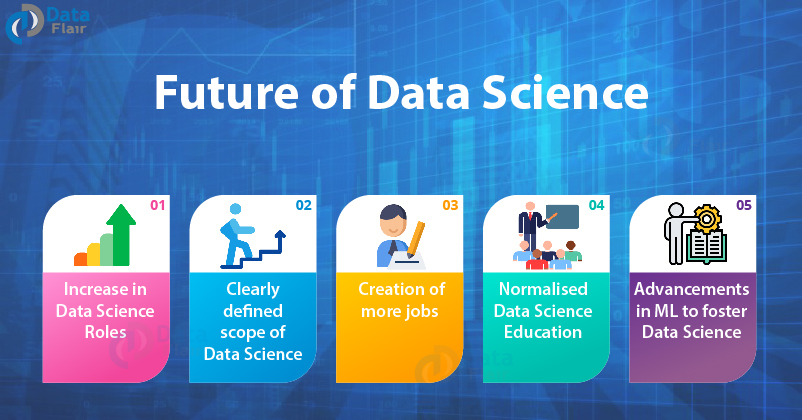
Introduction to Data Science Platforms
In today’s data-driven world, businesses are collecting and processing vast amounts of information to gain insights, make informed decisions, and stay ahead of the competition. However, managing data, building models, and analyzing information can be time-consuming and complex without the right tools. That’s where data science platforms come in.
What is Data Science Platform?
A data science platform is an integrated, cloud-based solution that streamlines and automates the entire data science process, from data preparation and modeling to deployment and maintenance. It provides a centralized workspace for data scientists, analysts, and developers to collaborate, experiment with different algorithms, and create predictive models that enable faster, more accurate decision-making.
Why Data Science Platform is important?
Data science platforms are becoming increasingly important as data volumes grow exponentially, and businesses realize the importance of leveraging data for insights. They enable data scientists to work more efficiently and productively, reducing the time needed for data preparation and modeling. Moreover, they provide a collaborative environment that helps teams work together more effectively, leading to better results. Finally, data science platforms allow businesses to scale their data science efforts and stay ahead of the curve.
Key Features and Capabilities of Data Science Platforms

Collaboration and Integration
Data science platforms enable teams to work together in a collaborative environment, sharing code, data, and insights easily. They provide integration with other tools and platforms, making it easy to import and export data, connect to databases, and deploy models.
Scalability and Flexibility
Data science platforms are designed to scale up or down based on the needs of the business. They can handle large volumes of data, and their infrastructure can be easily scaled to meet changing demands. Moreover, data science platforms are flexible and can be customized to fit the needs of different teams and use cases.
Data Access and Management
Data science platforms provide secure access to different types of data, whether it’s structured or unstructured. They allow users to clean, transform, and prepare data for modeling, without having to write complex code. Moreover, data science platforms typically include data governance features that ensure data quality, accuracy, and compliance.
Modeling and Analysis
Data science platforms provide a range of modeling and analysis tools that enable users to create predictive models quickly and easily. These tools include pre-built algorithms, automated machine learning, and the ability to create custom models using popular programming languages like Python, R, and SQL.
Visualization and Reporting
Data science platforms provide visualization and reporting tools that enable users to communicate insights effectively. These tools may include dashboards, charts, and graphs that allow users to explore data interactively and present findings to stakeholders.
Top Data Science Platforms in the Market
IBM Watson Studio
IBM Watson Studio is an end-to-end data science platform that enables users to build, train, and deploy machine learning models. It provides a collaborative workspace for data scientists, developers, and analysts, with integrated tools for data preparation, modeling, and deployment.
Google Cloud AI Platform
Google Cloud AI Platform is a cloud-based solution that enables users to create and deploy machine learning models at scale. It provides a range of tools for data preparation, modeling, and deployment, with built-in support for popular programming languages like Python, R, and TensorFlow.
Microsoft Azure Machine Learning
Microsoft Azure Machine Learning is a cloud-based data science platform that enables users to build, train, and deploy machine learning models. It provides a range of tools for data preparation, modeling, and deployment, with built-in support for popular programming languages like Python, R, and SQL.
Amazon SageMaker
Amazon SageMaker is a fully managed service that enables users to build, train, and deploy machine learning models quickly and easily. It provides a range of tools for data preparation, modeling, and deployment, with built-in support for popular programming languages like Python, R, and TensorFlow.
Databricks
Databricks is a cloud-based platform that provides an integrated workspace for data engineers, data scientists, and analysts. It includes tools for data preparation, modeling, and deployment, with built-in support for popular programming languages like Python, R, and SQL.
Benefits of Using Data Science Platforms
Efficiency and Productivity
Data science platforms enable data scientists to work more efficiently and productively, reducing the time needed for data preparation and modeling. Moreover, they provide a collaborative environment that helps teams work together more effectively, leading to better results.
Better Decision Making
Data science platforms enable businesses to leverage data for insights, leading to better decision-making. With access to predictive models and real-time analytics, businesses can make informed decisions quickly and confidently.
Improved Data Quality and Accuracy
Data science platforms include data governance features that ensure data quality, accuracy, and compliance. They provide a secure, centralized location for data storage and processing, reducing the risk of errors and improving overall data quality.
Increased Collaboration and Communication
Data science platforms provide a collaborative environment that enables teams to work together more effectively, share insights, and communicate results to stakeholders. This leads to better outcomes and helps businesses stay ahead of the curve.
Challenges in Implementing Data Science Platforms
Data science platforms offer businesses the ability to extract valuable insights from data through advanced analytics, but implementing such platforms can come with a range of challenges. Here are some of the biggest hurdles organizations face when implementing data science platforms:
Data Management and Integration
One of the biggest challenges businesses face when implementing data science platforms is data management and integration. Many organizations have complex data silos across different systems and departments. To effectively use a data science platform, organizations must be able to aggregate, clean, and integrate data from diverse sources.
Skills and Knowledge Gap
Another key challenge in implementing data science platforms is the skills and knowledge gap between data scientists and business users. To fully leverage data science platforms, businesses need to have skilled data scientists and analysts capable of utilizing the platform’s advanced analytical tools. But many organizations do not have the in-house expertise needed to operate these platforms effectively.
Cultural Resistance and Change Management
Implementing a data science platform often requires significant changes to business processes and workflows. Resistance to change can be a significant challenge, as it can be difficult to convince stakeholders to adopt new processes and tools. Organizational change management is necessary to overcome resistance to new ways of working and ensure that the platform is adopted effectively.
Cost and Investment
Data science platforms can be expensive to implement, and the return on investment may not be immediately apparent. Implementation costs include the platform itself, software licenses, and hardware infrastructure. Ongoing costs also include maintenance and support, training, and hiring or retraining skilled data scientists.
Best Practices for Successful Implementation of Data Science Platforms
Despite the challenges of implementing data science platforms, organizations can take steps to increase the likelihood of success. Here are some best practices for implementing data science platforms:
Define Clear Goals and Objectives
Before implementing a data science platform, clearly define the business goals and objectives it is intended to achieve. This can help ensure that the platform is configured and used in a way that aligns with business needs.
Choose the Right Platform
Ensure that the data science platform you choose is a good fit for your organization’s needs and capabilities. Factors to consider include the complexity of the platform, the level of technical expertise needed to operate it, and the platform’s ability to integrate with existing systems.
Secure Buy-in and Support from Stakeholders
To overcome resistance to change, secure buy-in from key stakeholders and involve them in the implementation process. This can help ensure that the platform is adopted effectively and that people are invested in its success.
Provide Adequate Training and Support
To ensure that the platform is used effectively, provide adequate training and support to data scientists and business users. This may include training on the platform itself, as well as on statistical analysis, data visualization, and other relevant skills.
Future of Data Science Platforms: Emerging Trends and Technologies
Data science platforms are constantly evolving, and new trends and technologies are emerging that could shape the future of the industry. Here are some emerging trends and technologies to keep an eye on:
Artificial Intelligence and Machine Learning
Artificial intelligence and machine learning technologies are rapidly advancing and becoming more accessible to businesses of all sizes. Data science platforms that incorporate these technologies can offer more advanced predictive analytics capabilities, enabling businesses to make data-driven decisions with greater accuracy and speed.
Cloud Computing and Big Data
The growth of cloud computing and big data is driving a shift towards cloud-based data science platforms. These platforms offer greater scalability, flexibility, and accessibility, allowing businesses to harness the power of big data without worrying about infrastructure.
Internet of Things and Edge Computing
The Internet of Things (IoT) is generating vast amounts of data from sensors, devices, and machines. Edge computing, which processes data closer to the point of origin, is becoming more important for IoT applications that require low latency and real-time processing. Data science platforms that can handle IoT data and integrate with edge computing technologies will become increasingly important in the future.In conclusion, data science platforms provide organizations with the tools they need to effectively manage, process, and analyze large amounts of complex data. These platforms offer a wide range of benefits including increased productivity, better decision-making, improved data accuracy and quality, and more effective collaboration. However, implementing a data science platform also comes with its own set of challenges, and it’s important to choose the right platform and follow best practices for successful implementation. As the field of data science continues to evolve, emerging trends and technologies will offer even more opportunities for organizations to leverage their data and gain a competitive edge.
FAQ
What is a Data Science Platform?
A data science platform is a software system that provides a range of tools and capabilities for managing, processing, and analyzing large amounts of data. These platforms typically include features for machine learning, data visualization, collaboration, and data management.
What are the benefits of using a Data Science Platform?
Data science platforms offer a wide range of benefits, including increased productivity, better decision-making, improved data accuracy and quality, and more effective collaboration. By providing a unified platform for data management and analysis, organizations can gain deeper insights into their data and make more informed decisions.
What are the challenges in implementing a Data Science Platform?
Implementing a data science platform can come with its own set of challenges, including data management and integration, skills and knowledge gaps, cultural resistance and change management, and cost and investment. Overcoming these challenges requires careful planning, stakeholder buy-in, and a focus on best practices.
What are some best practices for implementing a Data Science Platform?
Some best practices for implementing a data science platform include defining clear goals and objectives, choosing the right platform, securing buy-in and support from stakeholders, and providing adequate training and support. By following these best practices, organizations can ensure a successful implementation and maximize the benefits of their data science platform.